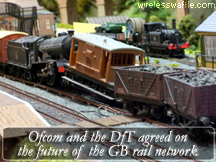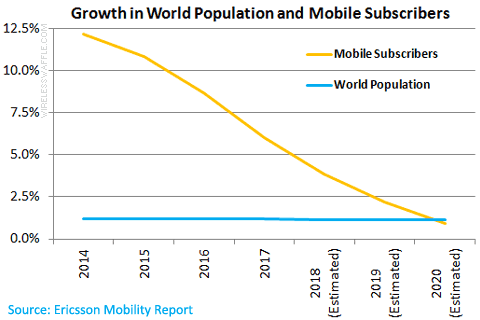Sunday 28 October, 2018, 09:38 - Much Ado About Nothing
Posted by Administrator
Posted by Administrator
 As it's that time of year again (which is to say late October), the time has come to give a plug to our ever growing list of One Hundred Halloween Hits. Whilst the list started out as just a hundred, it's now reached 130, so you are getting a bonus 30% free and for nothing. How good is that?
As it's that time of year again (which is to say late October), the time has come to give a plug to our ever growing list of One Hundred Halloween Hits. Whilst the list started out as just a hundred, it's now reached 130, so you are getting a bonus 30% free and for nothing. How good is that?Including such classic tracks as Thriller, Werewolves of London and Ghostbusters, if you are looking for the perfect playlist for your Halloween party this year, look, no further.
No, it's got nothing particularly to do with radio spectrum, or telecommunications but everyone needs a break, to let down their hair, put on a black cape, paint their face green and go from house to house demanding sweets (candy) from their neighbours occasionally don't they?
add comment
( 1534 views )
| permalink
| 



 ( 2.9 / 6059 )
( 2.9 / 6059 )




 ( 2.9 / 6059 )
( 2.9 / 6059 )
 For many years, Wireless Waffle has enjoyed the occasional bout of FM DXing. That is to say that when the propagation conditions have permitted, time has been enjoyably spent tuning up and down the FM band to see what can be heard.
For many years, Wireless Waffle has enjoyed the occasional bout of FM DXing. That is to say that when the propagation conditions have permitted, time has been enjoyably spent tuning up and down the FM band to see what can be heard.The logbook of this anomalous reception has been sitting waiting to be published for ages and now, with a quiet weekend with not much else to do has presented itself, it's finally morphed into a web-page of it's own.
Wireless Waffle is therefore proud to announce the FM DX Logbook. If this means nothing to you, then don't take a look. Even if it does, just one look is all it takes, as someone wiser and more lyrical once suggested.
Thursday 30 August, 2018, 14:45 - Spectrum Management, Much Ado About Nothing
Posted by Administrator
Posted by Administrator
 Ofcom has published a report called "Advice to Government on improving rail passenger access to data services, Spectrum for trackside connectivity solutions and rail passenger data demand". In it, they examine the amount of data needed to supply connectivity to passengers and then which spectrum band is best suited to supply these needs.
Ofcom has published a report called "Advice to Government on improving rail passenger access to data services, Spectrum for trackside connectivity solutions and rail passenger data demand". In it, they examine the amount of data needed to supply connectivity to passengers and then which spectrum band is best suited to supply these needs.The amount of data that each passenger will be consuming each month is taken directly from Ofcom's "Mobile Data Strategy" which was published in 2016. These range from 50 to 200 Gbytes per month in 2025 depending on the scenario. The report assumes that 80% of this data is offloaded onto WiFi and that it will be a WiFi service that is provided on the train.
 If this is the case, the average user will consume between 40 and 160 Gbytes of WiFi data per month, which is 1.3 to 5.3 Gbytes per day. If we take Ofcom's figures that there will be between 600 and 1440 passengers on busy commuter trains, and that a typical commute on a train lasts 1 hour, then the total amount of data per hour consumed by all the passengers between 33 and 315 Gbytes. This, in turn, equates to a connectivity requirement of between 73 and 700 Mbps. Of course, this assumes that every passenger on the train uses the WiFi service that is provided, which is unlikely to be the case, especially (as Ofcom also notes) if the service requires a payment to connect to.
If this is the case, the average user will consume between 40 and 160 Gbytes of WiFi data per month, which is 1.3 to 5.3 Gbytes per day. If we take Ofcom's figures that there will be between 600 and 1440 passengers on busy commuter trains, and that a typical commute on a train lasts 1 hour, then the total amount of data per hour consumed by all the passengers between 33 and 315 Gbytes. This, in turn, equates to a connectivity requirement of between 73 and 700 Mbps. Of course, this assumes that every passenger on the train uses the WiFi service that is provided, which is unlikely to be the case, especially (as Ofcom also notes) if the service requires a payment to connect to.Having presumably done the same calculations, Ofcom has arrived at a requirement of between 400 Mbps and 3.6 Gbps, or roughly 5 times more. So either train journey in Ofcom's world are 5 times longer, or people on trains are 5 times more hungry for data than normal individuals.
 Based on these figures, Ofcom have assumed that a benchmark connectivity speed should be around 1 Gbps for trains. It has then gone on to analyse the various spectrum options, and decided that the only band that can deliver the necessary connectivity is the 26 GHz band, which is one of the bands being touted for future 5G services. It completely excludes, for example, the use of the 2.7 - 2.9 GHz band as it claims that this could only deliver 100 Mbps of connectivity (assuming that 40 MHz of it could be made available). It also discounts the 5.4 GHz band as this could only deliver 'a few hundred Mbps'.
Based on these figures, Ofcom have assumed that a benchmark connectivity speed should be around 1 Gbps for trains. It has then gone on to analyse the various spectrum options, and decided that the only band that can deliver the necessary connectivity is the 26 GHz band, which is one of the bands being touted for future 5G services. It completely excludes, for example, the use of the 2.7 - 2.9 GHz band as it claims that this could only deliver 100 Mbps of connectivity (assuming that 40 MHz of it could be made available). It also discounts the 5.4 GHz band as this could only deliver 'a few hundred Mbps'. There are, though, significant issues with the 26 GHz band:
- Coverage of a 26 GHz 'cell' is expected to be a few 100 metres only, which would mean tens of thousands of cells would be needed to cover the UK rail network.
- Trains run at up to 200 km/h, this places extreme demands on handovers if cells are close together, let alone dealing with Doppler shift and Rayleigh fading.
- The 26 GHz band has been identified as a 'pioneer' band for 5G services in Europe and is likely to be in high demand from mobile operators for their future mobile services.
 There is, however, a very simple solution to the whole problem. If we shrink the size of the rail network to be only a few hundred metres long, then the 26 GHz solution will work perfectly. This, perversely, seems to be the plan of the Department for Transport who allow companies such as Southern, Thameslink, Hull Trains and Northern Trains to implement new timetables that effectively reduce the rail network to set of toys, that can't convey passengers anyway. Bravo, Ofcom, for realising that the rail industry will be reduced to OO-gauge before long anyway.
There is, however, a very simple solution to the whole problem. If we shrink the size of the rail network to be only a few hundred metres long, then the 26 GHz solution will work perfectly. This, perversely, seems to be the plan of the Department for Transport who allow companies such as Southern, Thameslink, Hull Trains and Northern Trains to implement new timetables that effectively reduce the rail network to set of toys, that can't convey passengers anyway. Bravo, Ofcom, for realising that the rail industry will be reduced to OO-gauge before long anyway.Thursday 21 June, 2018, 17:42 - Spectrum Management
Posted by Administrator
Posted by Administrator
 Wireless Waffle regularly peruse published data on all manner of radio and related topics to bring you our often orthogonal analyses of various subjects leading to outcomes that others may not have considered. It is with exactly that kind of hat on, that we were looking at the figures produced by Ericsson in its annual Mobility Report. In the report, they give the number of subscribers with a mobile connection, which in 2017 stood at 5.3 billion, up from 5 billion in 2016. This does not include 'machine' subscriptions, nor multiple subscriptions by the same person (i.e. where someone has a phone and a tablet computer, or a work phone and a personal phone) and therefore represents just the number of actual people with a mobile connection.
Wireless Waffle regularly peruse published data on all manner of radio and related topics to bring you our often orthogonal analyses of various subjects leading to outcomes that others may not have considered. It is with exactly that kind of hat on, that we were looking at the figures produced by Ericsson in its annual Mobility Report. In the report, they give the number of subscribers with a mobile connection, which in 2017 stood at 5.3 billion, up from 5 billion in 2016. This does not include 'machine' subscriptions, nor multiple subscriptions by the same person (i.e. where someone has a phone and a tablet computer, or a work phone and a personal phone) and therefore represents just the number of actual people with a mobile connection.The interesting fact from amongst these statistics is that the growth in new mobile subscribers is slowing, and using forecasting based on the 'it fits a nice curve so is probably right' school of highly advanced bistromathics, by 2020, new additions will have fallen to just 1% more than in the previous year reaching around 5.7 billion. World population growth is forecast to be around 1.15% in the same year reaching around 7.8 billion.

Digging slightly deeper into the figures, what becomes clear is that during 2020, the number of new mobile subscribers will be less than the number of new people on the planet. In 2019, the number of people without a mobile subscription is estimated (by Wireless Waffle) to be 2.08 billion. In 2020 the number of people without a mobile subscription is estimated to be 2.11 billion, or 30 million more.
This is an interesting conclusion. It means that within 2 years, the number of people on the Earth without a mobile subscription will begin to grow. The number of those without access to mobile telecommunications will get bigger. Or put in other terms, the digital divide (between the 'haves' and the 'have nots') will get worse. This appears to be down to two main factors:
 Coverage: Although coverage is still increasing in many countries, it is slowing down. In particular, coverage in rural or remote areas is not changing significantly, as it proves increasingly costly to reach these hard to get to places.
Coverage: Although coverage is still increasing in many countries, it is slowing down. In particular, coverage in rural or remote areas is not changing significantly, as it proves increasingly costly to reach these hard to get to places.- Price: The cost of mobile subscriptions is no longer falling significantly as operators fight to recoup their investments in 3G and 4G. As such, those who can afford a connection already have one, and other than general growth trends increasing the income of the lowest paid, those who cannot afford a connection are unlikely to be able to do so any time soon.
At the same time as the digital divide is set to grow, mobile operators and mobile equipment vendors are hell-bent on introducing new technologies including 5G and millimetre wave. Both these technologies will provide bucket loads of capacity and throughput, but cell sizes are generally going to be limited to a few hundred metres at most, and capacity will be focussed on dense urban areas where there is profit to be made selling such services to data hungry consumers. They are also not cheap and nor will they be incorporated into low-end mobile handsets. The upshot of this is that 5G and millimetre wave technologies will not improve coverage, indeed they will excentuate the urban/rural divide, and they will also do nothing to make services more cost-effective, they will exacurbate the problem.
There is no simple answer to the problems of coverage and price,
 other than mobile operators taking different investment decisions based not necessarily on commercial return, but on providing a public service. Of course they are commercial companies and thus neither obliged nor motivated to become public servants, which is why it might be time for governments to step in. This has happened already in many countries when it comes to investment in fibre, in that a market failure has been identified, and governments have stepped in to fund fibre roll-out to otherwise uneconomical places. The fibre has then been offered on a wholesale basis to anyone who wished to use it.
other than mobile operators taking different investment decisions based not necessarily on commercial return, but on providing a public service. Of course they are commercial companies and thus neither obliged nor motivated to become public servants, which is why it might be time for governments to step in. This has happened already in many countries when it comes to investment in fibre, in that a market failure has been identified, and governments have stepped in to fund fibre roll-out to otherwise uneconomical places. The fibre has then been offered on a wholesale basis to anyone who wished to use it.Maybe the same is now needed for wireless services. The 700 MHz band, for example, is a good candidate to provide rural and remote area coverage at reasonable cost. Instead of auctioning all of the band off to the highest bidder, governments could reserve some (or all) of the band for a national wholesale operator whose target is rural/remote coverage and sell this back to the other operators on a wholesale basis (they could even share the spectrum on a geographic basis with the main operators who could use it in urban/suburban areas). The governments of Mexico and Rwanda are already doing just this, and it makes sense: building just one network in hard to get to places, is, even using basic bistromathics, around four times cheaper than building one network per operator (assuming there are four operators).
One thing that will not solve the problem, is finding yet more radio spectrum for mobile services. Introducing new mobile bands such as those touted at 26 GHz and above, will do absolutely nothing to improve the situation. Today's problem is no longer capacity, it is coverage and price. And spectrum is not the solution, revised government thinking just might be.

